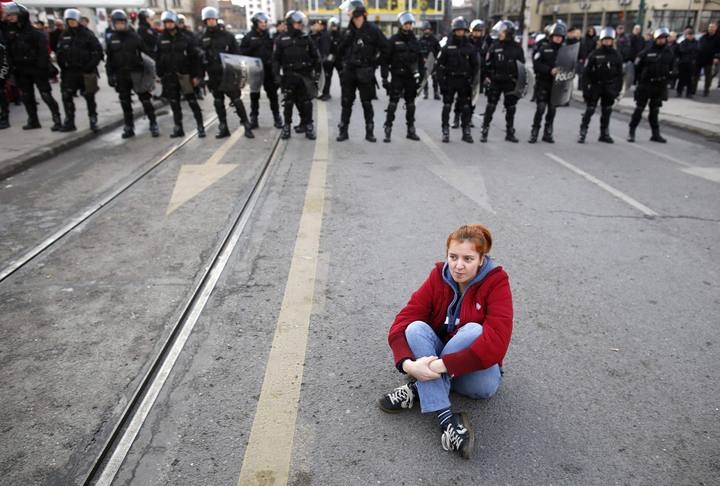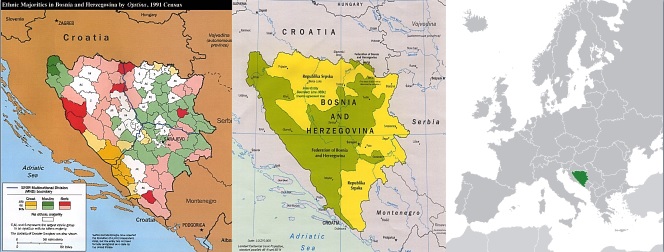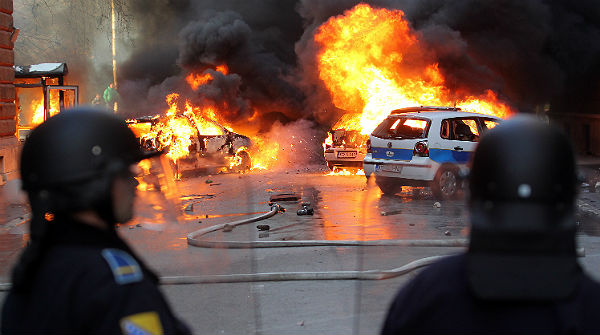Human Rights Watch ask the Bosnian government to investigate police violence in anti-government protests

21/II/14
After the end of the Bosnian War with the Dayton Peace Accords in 1995, the country's main problem has been its disfunctionality.
Neither war nor the agreements could prevent the country was divided (And still remains so) in two states.
On one hand, the Serbian Republic of Bosnia controlled by the Bosnian Serbs , which aims to segregate, and on the other hand the Cantonal The Federation of Bosnia and Herzegovina, which compose ten Bosnian and Bosnian-Croat cantons and the federal city of Brcko.
Many cities lay in ruins and the privatization of factories, quickly stripped of its most valuable assets, before declaring them in bankruptcy.
With about only 4 million people across the country, many believe that the weight of institutional spending is leading to bankrupt the country, leading some to say that for this population, it would be enough to have a good mayor, to govern it, but due to the ethnical divisions this way seems not possible nowadays...
Below: (Left to right) Ethnic composition of Bosnia at the beginning of the war, the limits of the two states that composes Bosnia and Bosnian situation in Europe

Despite the universally accepted belief in the country, about the corruption of the political class and the consciousness of its responsibility in these events, the fear of the resurgence of the war, left the population in the apathy and resigned to their own luck.
But it seems that it has already been reached the limit of what they are willing to endure, and the Bosnian people, launched themselves on February 5th, to the streets, in order to ask their authorities, some kind of action that makes them regain the hope.
Assumed the corruption of their leaders, the people do not even give due attention to the most notorious cases of injustice or corruption in recent times, as the Sejdic-Finci one (A Jew, and a Bosnian Roma who claims their right to participate in the state affairs, dedicated to Serbs, Bosnians and Croats), and their requests is now limited just to the basics ones: Labor, schools and health care.
The protests, which started being peaceful, escalated in the successive days, to the point that, on February the 9th, some analysts were already talking about a Balkan Spring, although the severity of the protests in Kiev, have overshadowed them somewhat in the media coverage.
Major protests focused on the four largest cities in Bosnia: Sarajevo, Mostar, Tuzla and Zenica, and ended with several institutional buildings and government and police vehicles on burned.

Police meanwhile, harshly repressed the demonstrators.
Human Rights Watch (HRW) has asked the authorities for an investigation to identify responsibilities.
HRW researcher Lydia Gall, stated that "It is completely unacceptable that members of the police utilized excessive force against peaceful protesters, including women and children were" and to "Use the force against members of the media, just for covering the manifestations"
Following the demonstrations, several first cantonal ministers, including the Tuzla and Sarajevo ones, have resigned, and have established citizens' assemblies, assisted by technocrats.
HRW noted that "Compliance with standards on human rights and the rule of law is a precondition for closer relations (of the country) with the European Union
